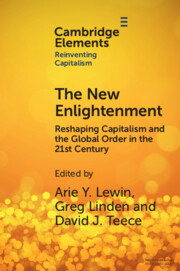Element contents
The New Enlightenment
Published online by Cambridge University Press: 04 August 2022
Summary
- Type
- Element
- Information
- Online ISBN: 9781009258616Publisher: Cambridge University PressPrint publication: 25 August 2022
References
- 8
- Cited by



